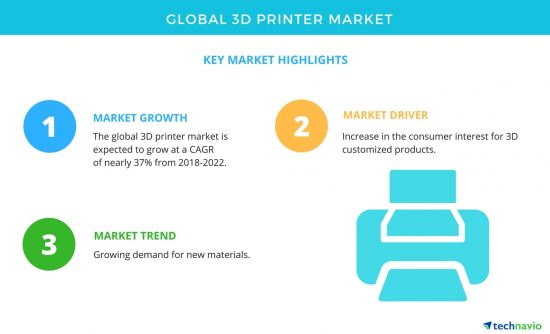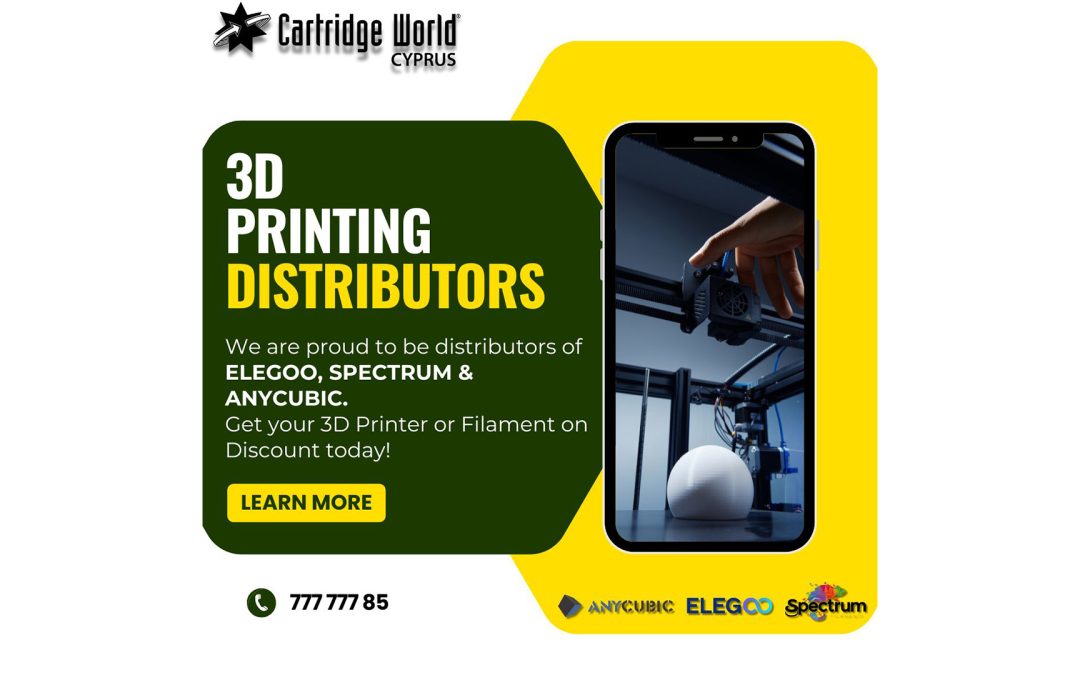
The latest market research report by Technavio on the global 3D printer market predicts a CAGR of around 37 percent during the period 2018-2022.
The report segments the global 3D printer market based on the type of products (industrial 3D printer and desktop 3D printer) and technology (FDM, SLA, SLS, and others). The report also presents an analysis of the market’s growth across various geographic regions such as the Americas, APAC, and EMEA. It provides a detailed illustration of the major factors influencing the market, including drivers, opportunities, trends, and industry-specific challenges.
Here are some key findings of the global 3D printer market, according to Technavio researchers:
- Increase in the consumer interest for 3D customized products: a major market driver
- Growing demand for new materials: key market trend
- In 2017, the FDM segment dominated the global 3D printer market, with a revenue share of 26%.
- The Americas dominated the global 3D printer market with 44% share in 2017
- 3D Systems, EOS, Formlabs, SLM Solutions, Stratasys, Ultimaker, XYZprinting are the leading players in the market.
Increase in the consumer interest for 3D customised products is one of the major factors driving the global 3D printer market. Customisation is a process of creating or altering the product according to the needs and requirements of the customer. Consumers have shown a great deal of interest in customised 3D products either by ordering the product from the companies that provide customised products or by purchasing a desktop 3D printer, which will help them in designing and developing the 3D printed products in-house.
According to a senior analyst at Technavio for computing devices research, “Currently, desktop 3D printers are becoming more affordable, due to which individual consumers are printing expensive products such as toys and home decor. However, the customisation of products comes at a high cost. Consumers with a high disposable income are the ones who are willing to invest in 3D printers. Other consumers are availing the services offered by online vendors for customised products.”
The declining prices of 3D printers are leading to the wider adoption of 3D printers. This is fuelling the demand for 3D materials. Materials such as plastics, metals, and ceramics are the key products used in the 3D printing technology. Plastics are the most commonly used printing materials as they are cheaper compared with other materials such as metals. However, the demand for new materials has increased as larger companies are rapidly investing in innovating materials. For example, in 2017, Formlabs introduced new dental 3D printing materials such as Dental Model, Dental LT Clear, and other two biocompatible materials. In 2015, 3D Systems expanded its product portfolio in the 3D printing material market by introducing a new nylon material for its flagship CubePro 3D printers.
The global 3D printer market by geography has been segmented into the Americas, EMEA, and APAC, with the Americas leading the market. Although APAC held the smallest market share in 2017, it is expected to witness the fastest growth of close to 2 percent over the forecast period. There is huge demand for additive manufacturing as it uses different technologies and materials to print 3D objects. The use of additive manufacturing has been increasing significantly, owing to its benefits.




















